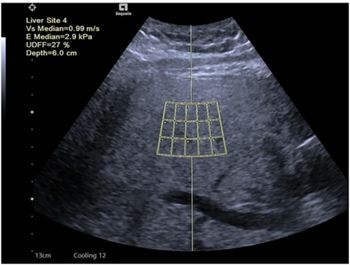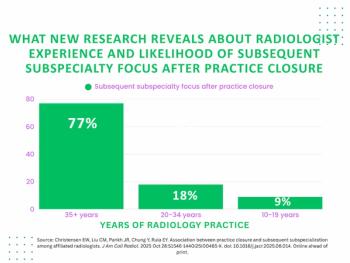
Fibroid treatment for gorilla reveals problems with U.S. human healthcare
When Chicago-area interventional radiologists performed a uterine artery embolization on a gorilla, they thought theirs was a purely humanitarian effort. But it also served to underscore that many humans can’t afford the minimally invasive interventional procedure or are kept in the dark about its benefits.
Beta, a western lowland gorilla from the Brookfield Zoo in Illinois, undergoes uterine artery embolization therapy provided by a team of interventional radiologists, zoo veterinarians, and imaging technologists.
When Chicago-area interventional radiologists performed a uterine artery embolization on a gorilla, they thought theirs was a purely humanitarian effort. But it also served to underscore that many humans can't afford the minimally invasive interventional procedure or are kept in the dark about its benefits.
Beta is a 46-year-old menopausal western lowland gorilla who lives at the Brookfield Zoo near Chicago. She has suffered since 2005 from abdominal pain and heavy vaginal bleeding caused by uterine fibroids. Arthritis and other ailments preclude her from getting a hysterectomy.
Her condition pushed her doctors to try treatment alternatives, such as endometrial ablation, which failed. They ultimately decided to ask interventional radiologists Drs. Steven Smith, Luke Sewall, and Francis Facchini from the Adventist Memorial Hospital in La Grange, IL, to treat Beta's fibroids with UAE.
The procedure took place Sept. 18 and lasted about 30 minutes. The intervention team comprised the three IRs, two technologists, a C-arm fluoroscopy application specialist, and zoo veterinarians. All imaging and interventional equipment, provided by GE and Boston Scientific, drugs, and medical personnel time were donated. Beta's UAE procedure was deemed successful, and she has recovered so far without complications.
"She's hopping around as much as she does and looks great," Smith told Diagnostic Imaging. "It was a bit nerve-wracking to do a case with about 30 people around taking pictures. The zoo vet staff was pleased about how it went, and we all had a great feeling with what we did."
Not everyone, however, was pleased. A posting on the Wall Street Journal's health blog noted, sourly, that Beta receives "any kind of care she wants." The entry scoffed at a gorilla getting top-notch medical care while human patients in the U.S. do not. It also implied, according to Smith, that Beta's treatment had been a frivolous stunt and a waste of medical resources.
"I wrote back to the WSJ health blog and noted that these animals are endangered. That everybody involved did this completely voluntarily as a humanitarian effort. But then I started thinking about it and realized that this gorilla really is getting better and more high-tech medical treatment than a lot of U.S. women," Smith said.
The WSJ blog entry forced Smith to ponder why a gorilla could get access to better treatment than some women with uterine fibroids. It also highlighted the fact that many women dealing with the condition undergo hysterectomy because they are unaware of the alternatives. Most U.S. women with fibroids get steered toward hysterectomy when their symptoms worsen. Everybody, or at least a considerable number of women, would get UAE, if it was done by gynecologists, he said.
Clinical studies have shown that the risk of death is about 10 times lower with UAE than hysterectomy. About 75% of U.S. women with fibroids would get good long-term results if they underwent UAE, Smith said. He admits that UAE is not the right treatment for everyone, but he questions what appears as strong resistance from gynecologists to consider the benefits of the minimally invasive procedure.
"A lot of the patients that we do are women who are independent thinkers, who go out on the Internet and look around to find out information for themselves," he said.
Criticism aside, he admits IRs do get referrals from gynecologists from time to time.
"Beta the gorilla is a referral from a gynecologist," he said.
For more information from the Diagnostic Imaging archives:
Newsletter
Stay at the forefront of radiology with the Diagnostic Imaging newsletter, delivering the latest news, clinical insights, and imaging advancements for today’s radiologists.






























